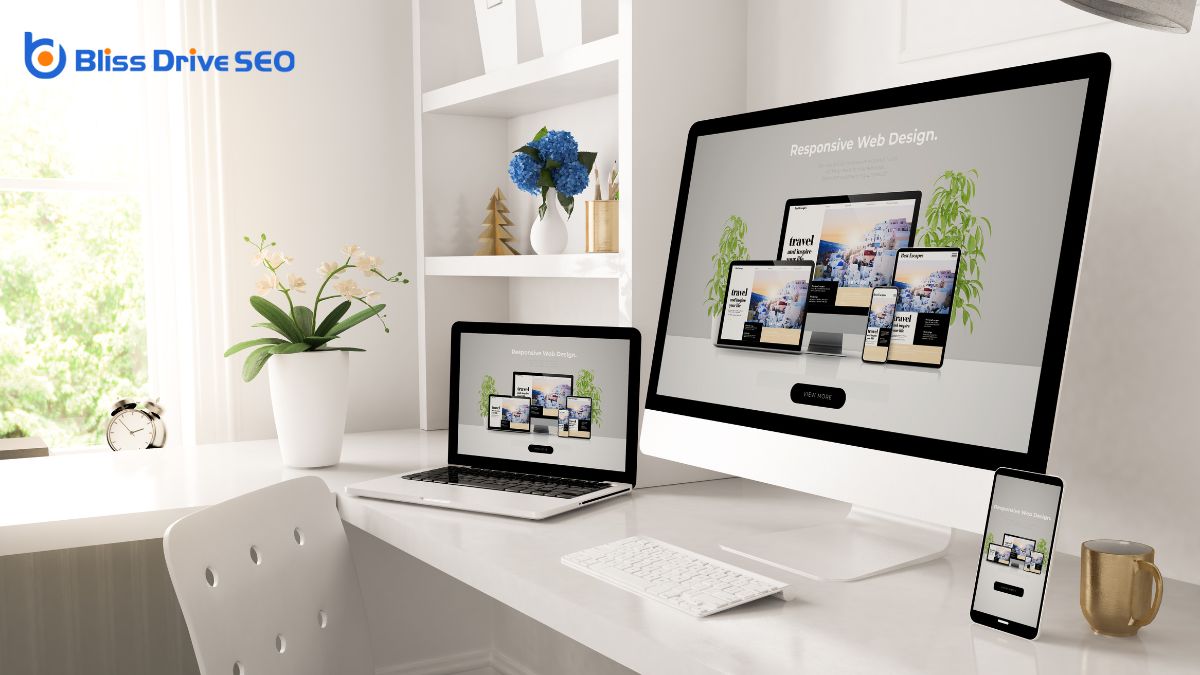Digital Marketing Services
Learn More About Us

When you're aiming to improve your conversion rateThe percentage of visitors who complete a desired action, such as making a purchase or filling out a..., start by getting to know your audience on a deeper level. This means collecting targeted data and analyzing it to create detailed buyer personas. Once you've got that down, turn your attention to your website. Simplifying navigation, ensuring it's mobile-friendly, and crafting compelling calls-to-action can make a world of difference. But don't stop there; A/B testingA method of comparing two versions of a web page or app against each other to determine which one pe... will help you pinpoint what's really working. And let's not forget about using social proofThe influence that other people’s actions have on one's own behavior, often seen in likes, shares,... to build trust. Curious about how these strategies come together for success?
To truly enhance your conversionThe completion of a desired action by a referred user, such as making a purchase or filling out a fo... rate, understanding your audience is paramount. You need to explore their needs, preferences, and behaviors.
Start by researching demographics and psychographics to uncover who they are and what they value. Survey your current customers and analyze feedback to pinpoint what drives their decisions.
Next, create detailed buyer personas that represent different segments of your audience. These profiles will guide you in tailoring your message and offerings.
Always listen to your audience by monitoring social media interactions and engaging with them directly.

When you optimize your website design, start by simplifying the navigation structure to make it user-friendly.
Guarantee visitors can find what they're looking for quickly, reducing frustration and increasing the likelihood of conversions.
Additionally, enhance the visual appeal by using clean layouts and compelling images that capture attention and encourage engagement.
A cluttered website can frustrate users and drive them away before they even have a chance to convert. To avoid this, simplify your navigation structure.
Think of it as a roadmap guiding visitors through your site. Start by organizing content into clear categories. Don't overwhelm users with too many options; stick to a few main menu items. Use descriptive labels so visitors immediately know where each link leads.
Keep the navigation consistent across all pages to build familiarity. Ascertain your search bar is easily accessible, providing a quick way for users to find what they need.
While a streamlined navigation structure sets the foundation for a positive user experience, a visually appealing design captivates and retains visitors.
First impressions matter, so choose a cohesive color scheme and clean typography to convey professionalism and trust. High-quality images and graphics enhance your message and keep users engaged.
Ascertain your website's layout is intuitive, with clear calls to action that stand out.
Avoid clutter by maintaining ample white space, allowing content to breathe and be easily digestible. Consistency across pages guarantees a seamless journey, encouraging users to explore further.
Improving user experience is essential for boosting your conversion rate, as it directly impacts how visitors interact with your website.
Start by guaranteeing your site is easy to navigate. Users should find what they're looking for quickly, so organize content logically.
Optimize your site's loading speed, as slow pages can frustrate visitors and leadA potential customer referred by an affiliate who has shown interest in the product or service but h... to high bounce rates. Make sure your website is mobile-friendly, as more users access sites on their phones.
Clear calls-to-action guide visitors smoothly toward desired actions. Use engaging, concise language to keep their attention.
Ascertain that your design is consistent and intuitive, reducing confusion. Finally, listen to user feedback to identify pain points and areas for improvement.
With these steps, you'll transform visitor experiences into conversions.
A/B testing is a powerful tool you can use to boost your conversion rate.
Start by testing different headlines to see which one grabs attention and drives action.
Then, compare button colors and analyze layout variations to find the combination that resonates best with your audience.
To truly understand what resonates with your audience, testing different headlines through A/B testing can be a game-changer. This method allows you to see what grabs attention and drives action.
Start by crafting several compelling headlines for the same content and compare their performance. Here's how to approach it:
Why do button colors matter when it comes to conversion rates? Colors can influence user behavior and emotions, guiding visitors toward taking action. A button's color should contrast with your page to grab attention and encourage clicks.
When you use A/B testing, you can determine which color resonates best with your audience. Start by selecting two different button colors to test. Set up an A/B test where half your audience sees one color, and the other half sees the alternative. Monitor which version achieves higher conversions.
While testing, consider cultural associations with colors, as they can impact perception. A/B testing button colors helps you make data-driven decisions. This simple tweak can lead to significant improvements in your conversion rate by aligning with user preferences.
Layout matters. It can make or break your conversion rate. If you're not seeing the results you want, it's time to analyze your layout variations using A/B testing.
This method helps you understand what works best for your audience. Here's how you can start:
Crafting compelling CTAs is essential for boosting your conversion rate because they guide your audience toward taking the desired action.
To create effective CTAs, focus on clarity and urgency. Use action-oriented verbs like "download," "subscribe," or "buy now" to clearly communicate what you want the audience to do. Personalize your CTAs by addressing the reader directly, making them feel involved in the process.
Make sure your CTAs stand out visually on the page with contrasting colors and strategic placement, ensuring they're noticeable without being intrusive.
Testing different versions helps identify which resonates best with your audience. Remember, a well-crafted CTA doesn't just tell users what to do; it compels them to act, enhancing engagement and driving conversions.
Have you ever noticed how much easier decisions feel when others have already paved the way? That's the power of social proof. It's about showing potential customers that others trust and use your product or service. By leveraging social proof, you're tapping into a natural human tendency to follow the crowd.
Here's how you can do it:
Using these strategies builds trust and encourages conversions.

While leveraging social proof can markedly boost trust, understanding how it influences your audience requires a keen eye for data. Examine your analyticsThe systematic computational analysis of data or statistics to gain insights and support decision-ma... to uncover patterns and trends. Identify which testimonials or reviews drive engagement and conversions.
Don't just collect data—interpret it. Analyze bounce rates, click-through rates, and conversion funnels to see what's working and what's not.
Once you've gathered insights, adapt your strategies. A/B testing is your ally here. Experiment with different layouts, calls to action, or testimonials to see what resonates best.
Keep refining based on feedback and results. Remember, consumer behavior isn't static. Stay agile and responsive, ensuring your approach evolves with your audience's needs.
This cycle of analyzing and adapting keeps your conversion rates on an upward trajectory.
To boost your conversion rate, start by really understanding your audience through targeted data collection and analysis. Design your website with user experience in mind, focusing on easy navigation and mobile-friendliness. Use A/B testing to find what works best and craft compelling calls to action. Don't forget to leverage social proof like testimonials to build trust. Continuously analyze performance data and adapt your strategies to stay ahead. By taking these steps, you'll encourage more conversions effectively.
